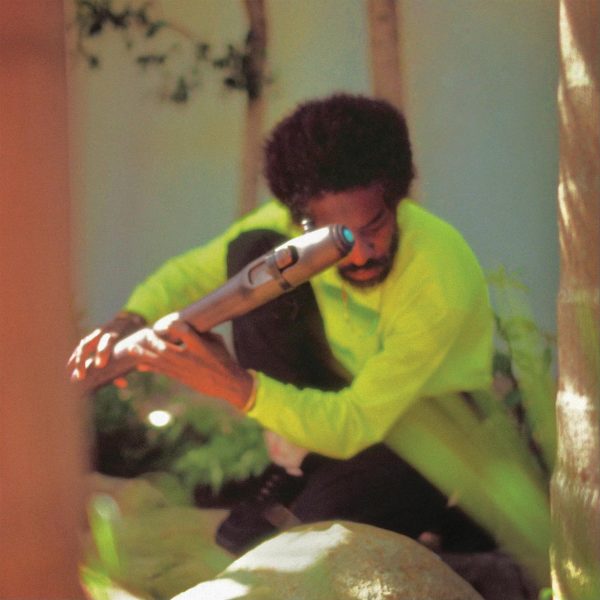The state of the ‘small screen’
It could be argued that young people have begun to spend too much time immersed in the small screens of their smartphones, tablets and computers. But a shift in the content of the “small screen” has changed enough to apply to everybody. Where we once looked to the TV sets in our living rooms to watch our favorite programs, more and more Americans are looking to these small screens instead.
Millions of Americans have relied on television since its invention to watch their favorite weekly programming. But since its invention in the 1920s, television has gone through many changes to enhance the viewing experience. Over the years color and picture quality improved, new channels were added and in 1999 the Digital Video Recorder (DVR) allowed for the recording of programs so that you didn’t have to watch them at the time they air.
The world of television has been ever expanding, but we’ve reached a point in pop culture that we should have seen coming all along. You no longer need a television to watch TV – all you need is an internet connection.
Streaming, or the playing of video in real time as it is downloaded over the Internet, has become a major way that people watch television. The most popular ways to stream are through subscription services such as Hulu, Amazon Prime and the wildly successful Netflix. These websites offer a wide array of movies and TV shows in exchange for a monthly fee – with some websites even offering free versions.
There are many different kinds of streaming services, even some that cable TV stations have begun to offer, but Netflix definitely has earned the most notoriety.
Netflix began in 1999 with a DVD-by-mail service. This was probably one of the first major steps in the downfall of DVD rental stores in that for $5 per month you could order your movie or TV show rentals online and keep them for as long as you’d like. Naturally, the company began to pick up speed as demand increased with its viewers.
They eventually decided to make a move that would change the state of TV forever: in 2007, they introduced online streaming as a free addition.
At the time, instant streaming was revolutionary. While it was still convenient to receive movies by mail after only a few days, this method wasn’t effective with TV shows. The way shows are formatted for DVD, a season will have multiple discs with only a couple of episodes per disc. With the mail delivery service, you could only rent one or two discs at a time, so if you were trying to watch an entire season, it might take a while with the waiting time in between the shipping of the discs.
With instant streaming, you had entire seasons ready to watch on your computer screen.
Needless to way, this changed the entire game.
Shortly after the introduction of online streaming, Netflix made several deals to include more shows and movies and offered streaming as a $7.99 per month standalone service. This was the beginning of a phenomenon known as “binge watching,” or the viewing of multiple episodes of a show in one sitting.
According to a survey conducted by Harris Interactive on behalf of Netflix among nearly 1,500 TV streamers (online U.S. adults who stream TV shows at least once a week), “…the majority of streamers would actually prefer to have a whole season of a show available to watch at their own pace.” 79 percent said watching several episodes of their favorite shows at once actually makes the shows more enjoyable.
It should be taken into account that Americans are becoming increasingly busy with work and other obligations. It’s harder for families to come together in time for the live airing of a TV show. The idea of being able to catch up with TV shows online takes pressure off of missing episodes and becoming lost. This is where the DVR has proved effective – but there exists a limit of space. Viewers typically won’t have enough space to save an entire season’s worth of episodes to catch up on.
One appeal of Netflix is the ability to sit down at absolutely any time and watch any number of episodes you have time for. At times, one might not even be able to finish one episode (Netflix always saves your spot), but other times one might have an entire free Sunday to spend catching up, or “binge watching”.
Netflix does receive some criticism, however, for not being up to date on the latest films and shows. Sometimes a show will be one to two seasons ahead of the latest one available for stream. One of the newer streaming services Hulu has an appeal unique from Netflix in that some weekly cable television shows update the site with each week’s new episode. In addition, Hulu offers both a paid and a free subscription service – at this point, it’s actually the number one free TV streaming website in the U.S.
Whichever service(s) you use, different options are available for different kinds of viewers: those who like to keep up with shows in a timely manner and those who prefer to wait until a season is over to watch it at their own pace.
Now, while streaming has grown wildly popular (in 2014 there were 95 million consumers of online TV in the U.S.), it wasn’t until very recently that cable television experienced tangible changes in viewership as a result of streaming.
According to Wall Street Journal, the Cabletelevision Advertising Bureau said that 40 percent of TV-rating declines in the third and fourth quarters of 2014 were attributable to streaming services.
This could have been for many reasons. Perhaps viewers are cancelling their cable services in favor of online streaming – it is significantly cheaper. It could be a matter of convenience, seeing as streaming services can be accessed anywhere with an Internet connection, including cell phones. Or people could be less interested in cable programming and more interested in online-exclusive shows such as Orange is the New Black and House of Cards.
Online streaming services have acquired massive viewership, with Hulu having over 6 million paid subscribers and Netflix over 39 million, but it has only recently meant less viewers of cable television. A few cable programs have proven there to still be a solid cable TV audience. 2015’s drama Empire was TV’s highest rated first-season finale in 10 years with 23.1 million viewers, and comedy The Big Bang Theory topped 2014 with an average of 23.4 million weekly viewers.
Some television hits are standing strong amidst the massive popularity of Internet TV. Again, what’s looking to be a shift from cable TV to online streaming has only just begun, so only time will tell if streaming becomes big enough to eclipse television completely.

My name is Taylor Stroud. I currently write and assist the Features editor for the Experience. I'll be receiving my AA in Journalism and then going places....









